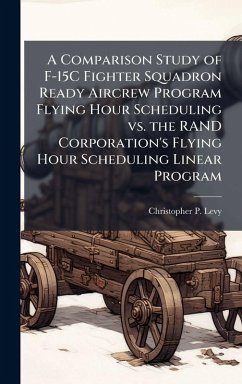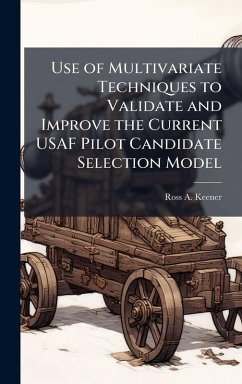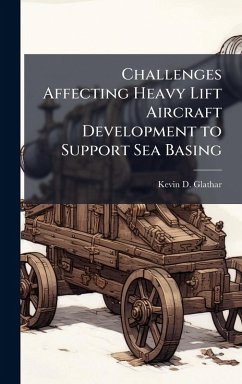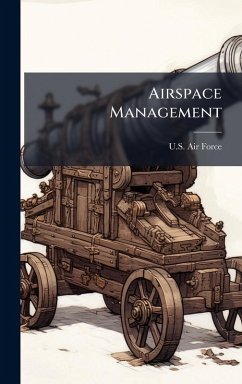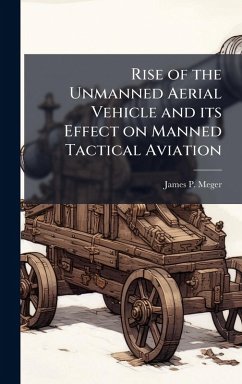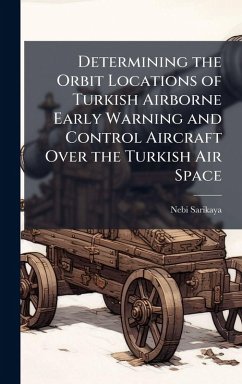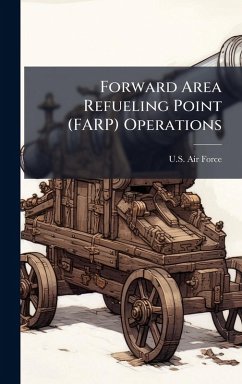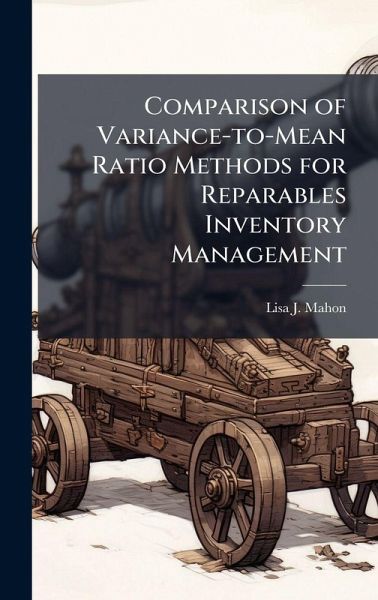
Comparison of Variance-to-Mean Ratio Methods for Reparables Inventory Management
Versandkostenfrei!
Versandfertig in über 4 Wochen
29,99 €
inkl. MwSt.
Weitere Ausgaben:

PAYBACK Punkte
15 °P sammeln!
In an effort to improve aircraft availability, this research compared the efficiency of ten methods of determining variance-to-mean ratios (VTMRs, VMRs, V/Ms) for repairable, spare aircraft parts known as reparables. These methods are base pipeline quantity, Hill-Stevens (220 LRUs), a variation of Hill-Stevens (10 1s), Hill-Stevens (230 LRUs), the Sherbrooke, a variation of Sherbrooke (10 1s), historical data, a new regression function, variance-to-mean ratio equals 1.00 or variance-to-mean ratio equals 1.01. Using VTMRs derived from quarterly organizational intermediate maintenance (OIM) dema...
In an effort to improve aircraft availability, this research compared the efficiency of ten methods of determining variance-to-mean ratios (VTMRs, VMRs, V/Ms) for repairable, spare aircraft parts known as reparables. These methods are base pipeline quantity, Hill-Stevens (220 LRUs), a variation of Hill-Stevens (10 1s), Hill-Stevens (230 LRUs), the Sherbrooke, a variation of Sherbrooke (10 1s), historical data, a new regression function, variance-to-mean ratio equals 1.00 or variance-to-mean ratio equals 1.01. Using VTMRs derived from quarterly organizational intermediate maintenance (OIM) demands for line-replaceable units (LRUs) from the D200A Secondary Item Requirement System (SIRS) databases in aircraft sustainability model scenarios and Excel spreadsheet simulation, this research concluded the VTMRs have an impact on aircraft availability and the cost of inventory. This work has been selected by scholars as being culturally important, and is part of the knowledge base of civilization as we know it. This work was reproduced from the original artifact, and remains as true to the original work as possible. Therefore, you will see the original copyright references, library stamps (as most of these works have been housed in our most important libraries around the world), and other notations in the work. This work is in the public domain in the United States of America, and possibly other nations. Within the United States, you may freely copy and distribute this work, as no entity (individual or corporate) has a copyright on the body of the work. As a reproduction of a historical artifact, this work may contain missing or blurred pages, poor pictures, errant marks, etc. Scholars believe, and we concur, that this work is important enough to be preserved, reproduced, and made generally available to the public. We appreciate your support of the preservation process, and thank you for being an important part of keeping this knowledge alive and relevant.



